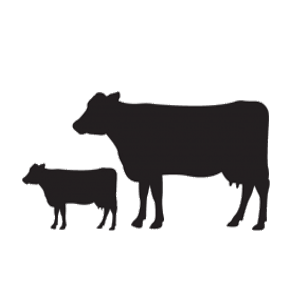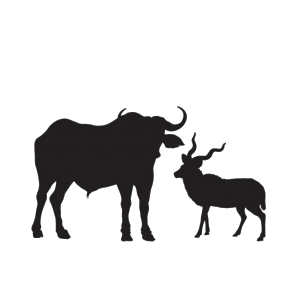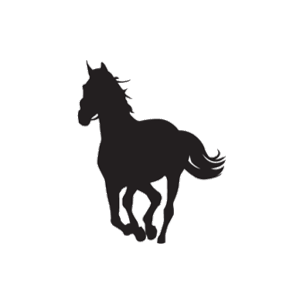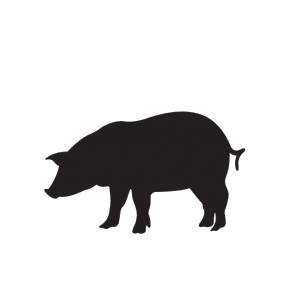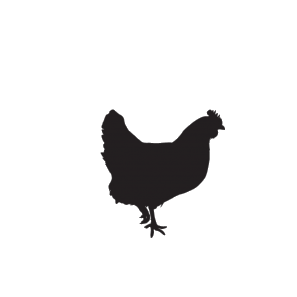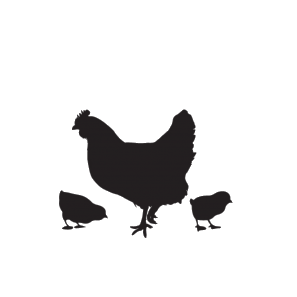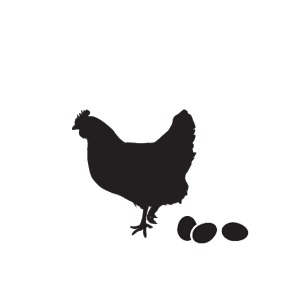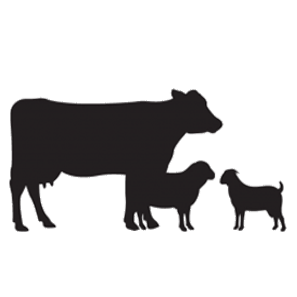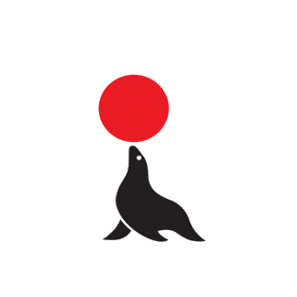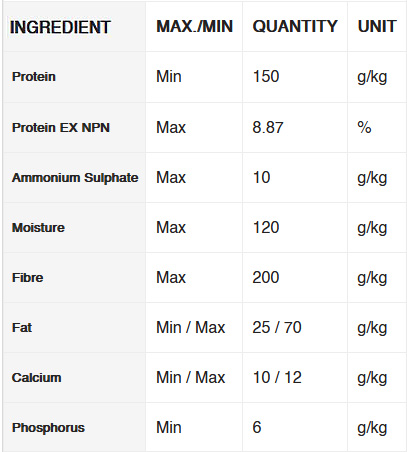There are many factors which affect feed intake of chickens and hence determine nutrient intake level and efficiency of poultry production. Although the spectrum of these factors is very broad, here the focus will be made on management and environment, feed and water, and physical factors.
Management and environment play an important role in controlling feed intake and efficiency. Poultry producers should, therefore, make use of the current technology and recent research works aiming at optimising management practices and micro-environment for better feed intake and utilisation.
Flock size – In studies on laying hens, feed consumed per bird was less in large than in small flocks for the overall production cycle. Feed conversion for egg production also improved with size of flock (Table 1). This was probably due to better management by owners of large flocks, thereby avoiding unnecessary wastage of feed.
Stocking rate – Feed intake and efficiency in broiler chickens were adversely affected by high stocking rate (30-40 kg/m2) compared to moderate stocking (24 kg/m2) even under conditions of sufficient feeder space. The effect of stocking rate and feed utilisation could be attributed mainly to the restricted access to the feed, increased heat stress, increased ammonia level, and prevalence of pathologies. Much of these effects could, however, be alleviated with proper ventilation and other management and feeding practices, as will be discussed later.
Temperature – High temperatures have the most striking effects on feed intake, particularly at the post-brooding stage. This relationship may be described by the following equation: ME=1690-2.1T: where “ME” is the metabolisable energy and “T” is the ambient temperature.
The efficiency of feed utilisation for gain is also reduced under heat stress. It has been reported that body weight gain from 4-8 weeks of age was 1,225 grams at 21ºC, and was reduced linearly to only 1,087 grams at 26ºC. Such a problem comes not so much from temporary exposure to heat as from continuous exposure, as the chickens will have no opportunity to move to more comfortable temperatures. Heat stress does not only affect feed intake and utilisation, but also has negative impacts on the carcass quality.
This is due primarily to the unfavourable partitioning of ME consumed, with the greater part of it being deposited as fat and the lesser part as protein (Table 2).
Lighting – Recent studies have examined an alternate lighting system in which the birds are exposed to one hour of light followed by three hours of darkness, with the cycle being repeated six times in a day. Shown in Table 3 are the results from broilers kept under the alternate or continuous lighting patterns. Although feed intake was reduced under the alternate lighting system, the birds here had better feed efficiency and greater body weights than the control group with continuous light. The improvement in performance was attributed to the birds resting during the dark period, thus lowering maintenance energy requirement and allowing more feed energy to be used for growth. It is also thought that feed is better utilised by birds after their digestive tracts are emptied during the periods of darkness.
The colour of lighting also affects feed utilisation and growth performance. Generally, birds prefer to consume feed under white light because it helps them identify texture differences they cannot see under different colours. In some cases, however, poultry producers may be prompted to use other light colours in order to alleviate a variety of production problems. Red light, for example, may be used for control of cannibalism, because birds cannot see the blood stimulant under red light. In other cases, blue or green lights may be used to keep birds calm by reducing hypothalamic gonadotropin production, and hence alleviate much of the losses caused by hyperactivity.
The feed intake response and growth performance of chickens reared under such light colours may not always be as good as with the white light. Better results could, however, be obtained when interacting colours of light with other factors such as light intensity and feed colour. In some studies, feed intake and growth performance were improved under blue or green lights provided at high- rather than low intensity. In other studies, improvement was also obtained with red-dyed feed given under blue light, but no other combinations of light and feed colours have yet been examined.
Noise – Chickens in a given farm may in some cases be exposed to noise stress generated either from external source (i.e. takeoff or landing of aircrafts in neighbouring airports), or from internal sources (i.e. power generators, ventilation equipment, etc).
The noise level is often measured in decibels (dB), and the critical level at which chickens are considered “stressed” is thought to be 85 dB or above, and the stress would be more drastic with prolonged time of exposure to noise. In this case, feed intake performance would be reduced by about 15-25% due to changes in neural and endocrine functions which affect retention time and rate of passage of feed through the GI tract, thereby affecting the ability of the bird to ingest new batches of feed.
Feed and water factors
From the time the chicks arrive on the farm they should have immediate access to clean, fresh feed and water, which are essential to maximise the genetic potential and take advantage of the modern chick’s voracious appetite. The following are some key tips to ensure adequate consumption and maintain high performance.
Physical form of feed – Pelleting feeds usually results in increased density and intake of the ration, and also improves growth and feed efficiency. Shown in Table 4 are results of three experiments comparing performance of broiler chickens fed pelleted and ground rations. These particular experiments were conducted on the same breed of chickens under similar management conditions. The differences in feed conversion observed within the pelleting treatment could have been linked with differences in pellet quality. It has been estimated that 0.01 in feed conversion is lost with each 10% increase in ‘fines’ in pelleted feeds. Although pellet quality may appear adequate immediately after leaving the feed mill, pellet quality at the time the flock is consuming the feed in the house is what counts. Every effort should, therefore, be directed toward improving the quality of pellets that arrive in the feed troughs for broilers.
Feed flavour – Certain natural feedstuffs are relatively unsuitable for chickens because they are not palatable. For example, chickens tend to avoid diets high in barley, rye or buckwheat in comparison with similar diets containing yellow corn. They also tend to avoid diets containing unusual ingredients such as single-cell proteins, fruit processing wastes, marine flora, etc. in comparison with respective diets providing the basic nutrients from natural feed materials.
Even with natural feeds known to be highly palatable, there may still be spoilage factors that adversely affect palatability due to rancidity of fats, moulding of sugars and putrefaction of proteins, particularly when the feed is used after a long storage period. Deterioration of these important nutrients will produce flavours and odours that are not acceptable by the birds, representing a key factor in poor feed performance.
Flavour problems may also exist in freshly produced feeds. In many cases, it is impossible to produce high uniform palatability in different feed batches without flavour aids. This is due to varying by-products, different soil and crop conditions, and to varying manufacturing processes. The feed additives used in different batches may also contribute to the change of flavour. The fats, for example, may be provided from inedible animal greases with various impurities and contaminative feed vapidity. Likewise, minerals and vitamins may be provided in premixes having off-flavour carriers and bases, all of which factors are inductive to “taste shock” changes in feed intake.
The addition of feed flavours in such cases would help prevent the “starve-outs” in very young chicks, and help keep chickens “on feed” until they gradually increase consumption of the feeds which they initially avoided. Also, the feed that is made more palatable through the addition of flavours is more easily digested than a less palatable feed, and will thus have greater conversion efficiency.
Anti-nutritional factors -Some feed ingredients such as raw soybeans contain a number of unknown factors which inhibit pancreatic trypsin activity and inhibit digestion of the dietary proteins. Therefore, chickens fed raw soybeans often exhibit low intake and reduced feed efficiency. In one study, average feed intake by broiler chickens has been reduced from 2,955 to 2,400 grams, and feed efficiency from 1.97 to 2.45 when raw soybeans have been used as a sole source of protein in the diet in place of heated soybeans over the first six weeks of age. As they grew older, the chickens feed intake and efficiency have been nearly equal to those fed the heated beans.
The effects of age on utilisation of raw soybeans by chickens could be explained by the fact that in older chickens there is a decreased pancreatic weight in relation to the body weight, amounting to less than 0.3% of the total weight of the bird. The pancreatic activity in this case and the related process of protein utilisation will be less prone to the effect of the trypsin inhibitor compared to the case of younger chickens which have larger pancreases relative to their body weights. In this latter case, the amount of raw soybeans fed should be restricted to a larger extent when attempting to achieve better feed intake and performance.
Feed wastage – Shown in Table 5 are factors that could be operating in a broiler house to increase the apparent feed consumption and so lead to an incorrect picture of feed efficiency and flock performance. Although it is hardly possible that any grower today would have all factors operating against him at any one time, it is surprising how many have several of them in operation on their farms. This problem is strictly under the control of the producer and costs little or nothing to correct. However, it seems difficult to get the total feed wastage below the figure of around 2% even under the best management conditions.
Water supply – Water intake is correlated with feed intake and thus any decrease in water consumption due to failure in the water supply or lack of watering space would result in decreased consumption of feed to a varying extent, depending on the age of the chickens and the degree of water restriction.
Body Factors
A number of body factors have been shown to be closely correlated with feed intake (R2 value ranging from 0.7 to 0.9), as there are:
Volume of GI tract – Chickens having larger volume of GI tract relative to the total body mass during embryonic development consume a volume of feed approaching the full capacity of their GI tract, while consuming only a small percentage of their total capacity when the volume of GI tract is small. The villus surface area is also increased in the former case by about 20-fold, which in turn increases digestibility and hence improve feed intake.
Taste buds – Despite the fewer taste buds present in chickens relative to the mammalian species, the response of these buds to feed ingredients of low-palatability may vary among different lines, with a resulting differences in feed intake. This means that with the same number of taste buds, some chickens may consume more feed than others because of low response of these buds to the low palatability of feed. This aspect is genetically-medicated and could be used for control of feed intake through selection among chicken lines.
Genes and hormones – The increased amount of leptin, a gene product originally produced in the adipose tissues, helps regulate appetite through its action at specific hypothalamic sites. Similar action has been noted with some thyroid hormones such as T3. The increased amount of T3 circulating in the blood stream is often associated with increased intake, as evidenced by the low T3 level at fasting.
Feather cover – Some hens lose their feathers over large parts of their body due to feather pecking, poor beak trimming, abrasion, and/or moulting. As a result, there is a decline in their natural heat insulation and increase in heat loss from the bird. This aspect is more pronounced with poor feather cover on the neck and back, since these parts are more exposed to the environment compared to the breast or the legs.
In this case, there is an increase in feed intake to compensate for the amount of feed energy lost as heat, coupled with low egg production and poor feed efficiency, expressed as the amount of feed per dozen of eggs (Table 7). This is particularly true in cases where chickens are exposed to temperatures below 20ºC for 50% of the time they are housed.
To avoid these problems, it is important to keep birds warm in winter and not to emphasise only on keeping them cool in summer. For this to be valid, the heating cost should first be balanced out against the expected increase in feed because of the poor feather cover.
References are available upon request from the author.
Source: Poultryworld




